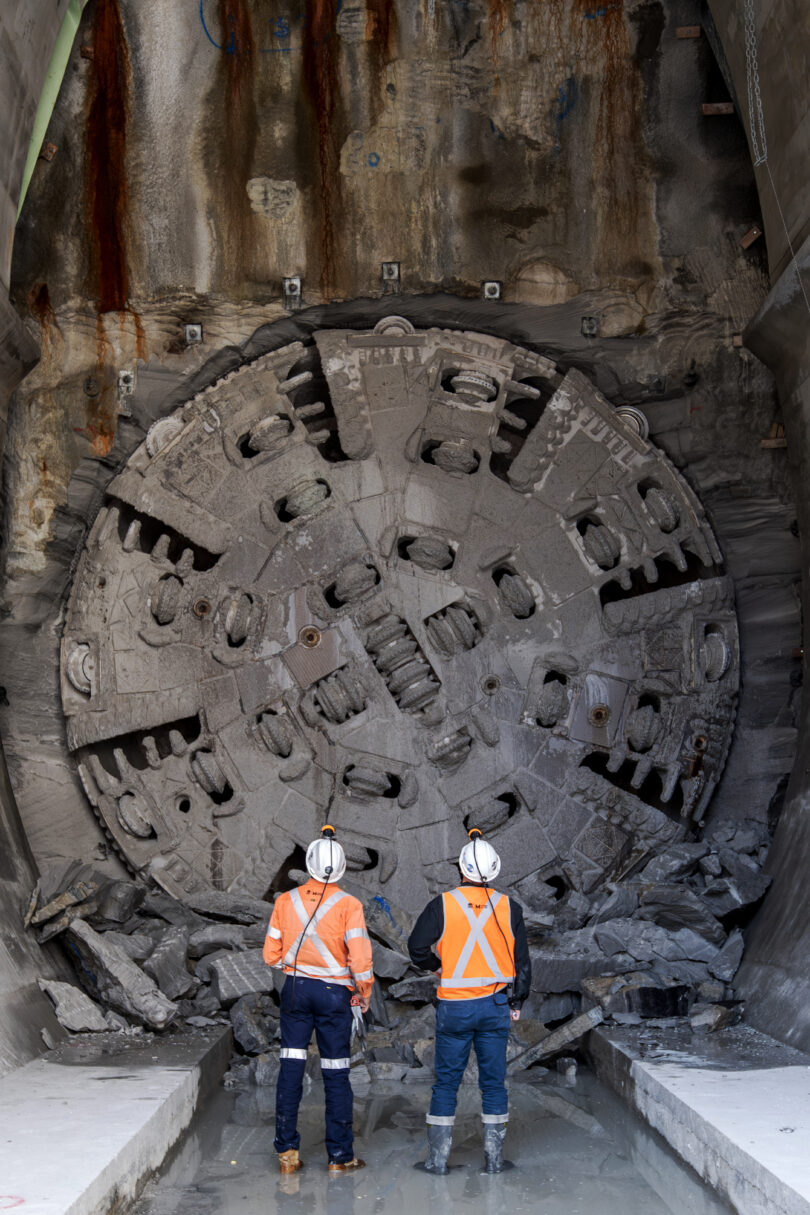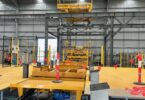Big Breakthrough in Burwood for Sydney Metro West
Monday, 29 April 2024
Two mega tunnel boring machines (TBMs) have arrived at Burwood North Metro Station site as the 24-kilometre Sydney Metro West twin tunnels connecting Greater Parramatta and the Sydney CBD charge ahead.
This marks a significant milestone on the Sydney Metro West project that the NSW Government has enhanced by driving housing uplift along the line.

Tunnel Boring Machine Beatrice (TBM3) breaks through at the Burwood North station site, and joins TBM Daphne at the 2nd stop on their 11-kilometre journey constructing the Sydney Metro West railway tunnels from The Bays to Sydney Olympic Park.
The TBMs have each built 6.26 kilometres of tunnel, so far excavating a combined 1,200,000 tonnes of dirt (around 196 Olympic swimming pools) and installing around 44,100 tunnelling segments to line the new tunnel walls.
The TBMs are more than halfway through the 11-kilometre journey to carve out a section of the alignment between The Bays and Sydney Olympic Park, via future station sites at Five Dock, Burwood North and North Strathfield.
It will take just over two weeks for the TBMs to traverse to the western end of the cavern where they will be relaunched to tunnel the 1.8-kilometres to the next stop at Metro’s North Strathfield station site.
TBMs Beatrice and Daphne are due to complete the journey to Sydney Olympic Park in the second half of 2024.
This enhanced project will double rail capacity between Greater Parramatta and the Sydney CBD, making it easier and faster to travel around Western Sydney.
It will also turbocharge the delivery of new housing along transport lines improving affordability of housing, while reducing building and infrastructure costs and creating thriving communities.
Sydney Metro West is expected to be complete by 2032.
For more information on Sydney Metro West: sydneymetro.info/west/project-overview
NSW Premier Chris Minns said:
“This marks a major milestone in delivering this crucial new Metro line that will make it easier for people across Western Sydney to travel around our city, while addressing the housing crisis that has gripped NSW.
“NSW is losing twice as many young people as we’re gaining, and it’s projects like this that create new homes for them that will play a critical role in making housing more affordable in NSW.
“Thank you to the thousands of people that are working to build this mammoth project, the largest public transport project in Australia.”
Transport Minister Jo Haylen said:
“Australia’s biggest public transport project is making fast progress. Daphne and Beatrice can almost see the finish line, they’re just under 5-kilometres away from their final destination, Sydney Olympic Park.”
“These breakthroughs mean we are a step closer to delivering this once-in-a-century infrastructure investment in our city that will be a catalyse for housing growth across Sydney.”
“When Burwood North Metro Station opens, it will be a exciting, state-of-the-art transport destination that will change the way people move in what is currently a very bus-dependant corner of our city, and it will take pressure off the existing T1 Western line.
TBM Beatrice and Daphne fast facts:
- TBMs are double-shield, hard rock TBMs specifically designed to excavate through the sandstone and shale ground conditions.
- A team of 15 workers per shift operate each TBM as it excavates an average of 200 metres per week.
- The TBMs are 165 metres long (more than the length of 2x A380’s which are approx. 73 metres).
- TBMs are built using refurbished cutterheads, front shields and gripper shields from TBMs used on the Sydney Metro City & Southwest project.
- Each TBM is approx. 7 metres in diameter.
- 34x disc cutters per cutterhead (disc cutters are approx. 48cm in diameter).
- Heaviest pieces of the TBM are the front shield and gripper shield both approx. 280 tonnes each, the cutterhead is approximately 102 tonnes.
- To prepare for the arrival of the TBMs, the Burwood North station box cavern was excavated and about 532,105 tonnes of material was removed to create the 29-metre-deep box-like structure that is 25 metres wide and 194 metres long.







